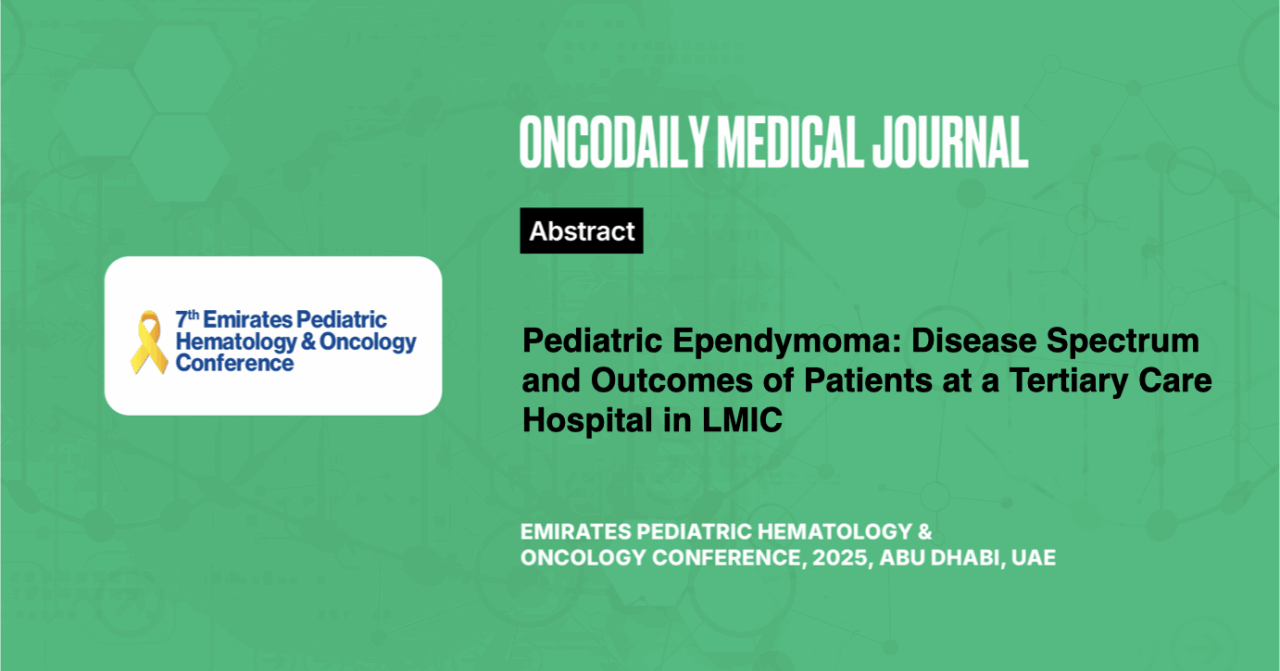Pediatric Ependymoma: Disease Spectrum and Outcomes of Patients at a Tertiary Care Hospital in LMIC
Abstract
Introduction: Pediatric ependymomas account for 6-10% of cases and are the third most prevalent brain tumor in children. They are difficult to treat, with a 10-year survival rate of 64%. These tumors arise in various parts of Central Nervous system, and the mainstays of treatment are surgery and radiotherapy.
Even after meticulous treatment, recurrence rates are significant, reaching 50% after 5 years. Given the scarcity of local survival outcome data, a study in tertiary care hospital in Pakistan intends to collect data on demographics, spectrum, and treatment outcomes among patients with ependymoma aged 0-21 years..
Methodology: From January 2012 to December 2021, 48 pediatric ependymoma patients ages 0 to 24 were investigated in this retrospective study at the Aga Khan University Hospital, Karachi. It recorded information about demographics, diagnosis, treatment, and follow-up. All patients had MRIs and surgeries, with some undergoing chemotherapy and radiation. To analyze overall and progression-free survival, SPSS V.23.0 was utilized, along with descriptive statistics and survival analytic methods such as Kaplan-Meier curves and log-rank tests.
Results: In a 10-year study of 48 children with pediatric ependymoma (64.6% male, and median age 7.5 years) presented with headaches and vomiting (43.75%), limb weakness (25%), backache (20.83%) and ataxia (18.75%) as prevalent symptoms. Supratentorial (29.2%), Posterior fossa (50%), or Spinal (20.8%) ependymoma were the three tumor classifications. All patients underwent surgery, with some experiencing complications. Histopathology shows: 62.5% anaplastic ependymoma, 33.3% Classic ependymoma and 4.16% Myxopapillary ependymoma. 10.4% patients were treated chemotherapeutically, while 62.5% had radiation therapy. Overall survival was recorded to be 79.2%, progression-free survival was 66.7%, and disease recurrence occurred in 18.8% of patients.
In terms of outcomes, our series shows that patients with ependymoma in Pakistan suffer a number of obstacles that contribute to a worse prognosis than their counterparts in high-income nations. Patient outcomes are greatly impacted by limited access to specialized healthcare facilities, delayed diagnosis, and insufficient funding for optimum treatment. Treatment procedures such as surgery, radiation therapy, and chemotherapy are frequently jeopardized due to a variety of problems such as budgetary restrictions, a lack of experience, and insufficient infrastructure.
Conclusion: Our study provides relevant knowledge about the characteristics, identification, management, and prognosis of ependymoma in low- and middle-income countries. These results underline the value of early identification, thorough surgical intervention, and individualized treatment plans for ependymoma patients in resource-constrained settings in order to enhance their prognosis and long-term health.





